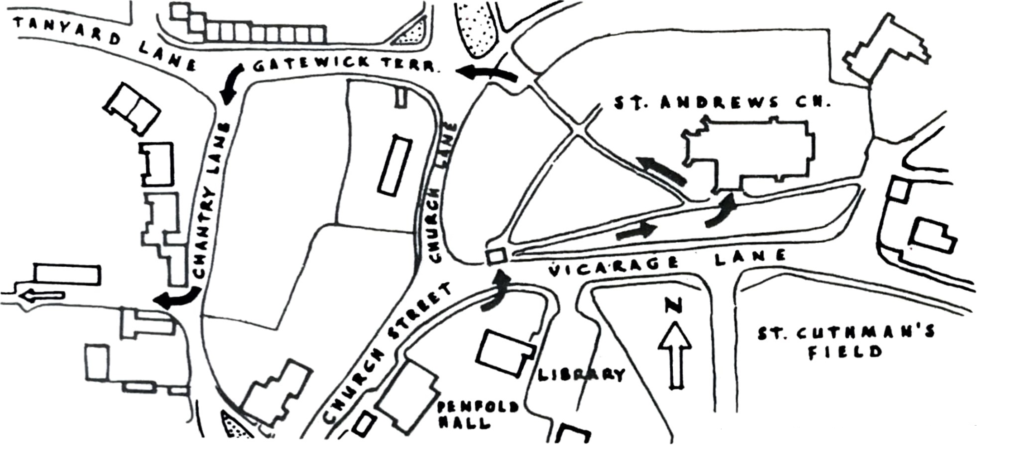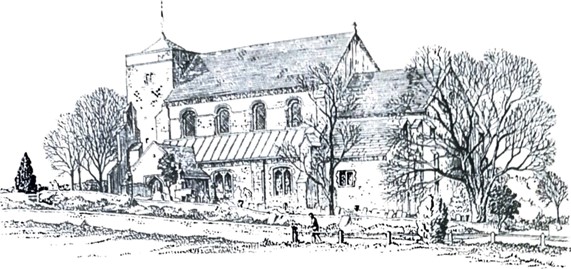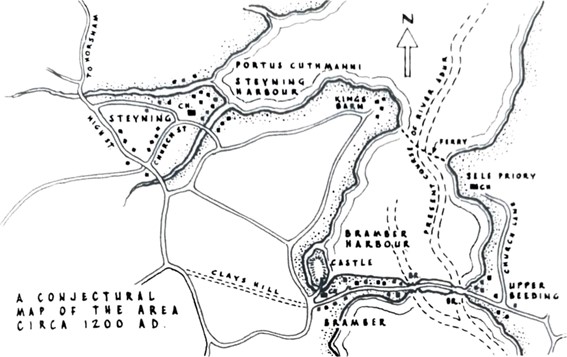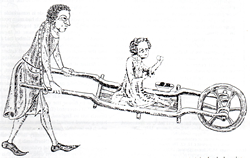Vicarage Lane


Cross the road and pass through the lychgate to visit the Parish Church of St. Andrew and St. Cuthman. In this beautiful Norman church, one of the best examples of this period in Sussex, you should find a guide leaflet and we shall make only a brief reference.
There is little doubt that this was a much larger church, possibly cruciform with the present lofty chancel arch at the original crossing under the former tower. The Abbot of Fécamp established a College of Canons here probably large enough to justify a large church. You can see the evidence of a further pair of nave arches adjoining the present Elizabethan tower which now houses a peal of eight bells. There is much interest in this lovely church but note particularly the magnificent Norman carving of the arches and the capitals of the massive columns; also the Norman font. See also the beautiful oak screen in the Chancel, carved in Tudor times.
Under medieval Church law a fugitive from justice could be temporarily secure in the church or even by grasping a ‘sanctuary’ ring on the door. As you come out of the church note two such rings on the inner door. There were similar rings on the outer door (now replaced) which gave protection to Peter Gitterer and Adam Sorel when accused of murder in 1287.

A series of steps in the wall of the churchyard (built in 2002 with Millennium funding) lead down to St. Cuthman’s Field south of the church. This was largely secured as a permanent open space by local subscription which included a Festival and Pageant organised by The Steyning Society in 1966. At the entrance to the field is a statue of St. Cuthman, also erected as part of the Millennium celebrations. To the east and north was once the flourishing port of Steyning and the conjectural sketch shows where this might have been before the silting up of the estuary of the river Adur. Definite evidence has been found of the bridges at Bramber but the navigable areas of the old River Brembre can only be assumed.
From the church turn right diagonally across the churchyard. From this path you will get a glimpse of Gatewick, another old building which has seen many architectural changes. It was in the lovely grounds of this house that the legend of Fippa’s Pool was set. When Cuthman found that his two oxen had been stolen by widow Fippa’s two sons he yoked them to his plough. When Fippa angrily tried to put a curse on Cuthman she was suddenly drawn up into the air by a whirlwind and deposited into a muddy pool!
When you reach the end of the path by the wrought iron gate of Gatewick there is a housing estate to your right called Shooting Fields for here in Elizabethan days the local militia practised their archery.
Proceed a little way along Gatewick Terrace and turn left up the narrow Chantry Lane. At the top turn right at the corner building with the buttressed walls. Opposite is a cottage called Smugglers and where a light used to be put in the tiny gable window to warn smugglers that the excise men were on the prowl. One such, a smuggler named Cowerson, did not ‘see the light’ and was shot by his pursuers and was buried in St. Andrews Churchyard in 1832!
Turn left into Elm Grove Lane. Passing some pleasant little terrace houses on your left you will get back to the High Street and the High Street car park from which you started.
We trust you have enjoyed your walking trail of our Conservation Area and will agree that its present designation of Outstanding is fully justified!
